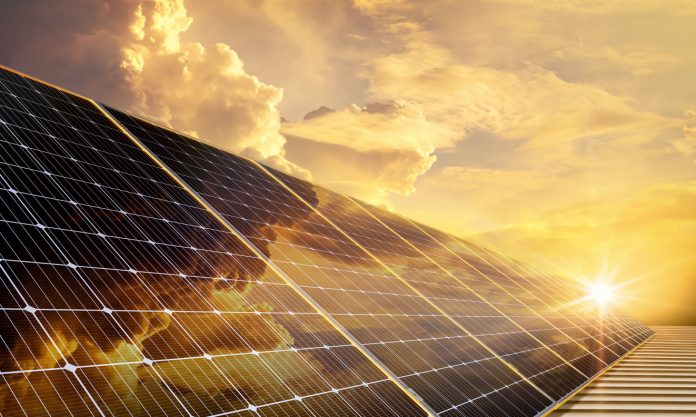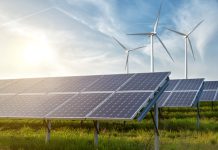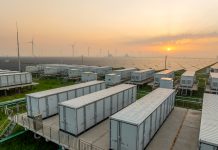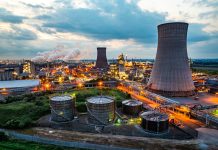Open Access Government charts some of the EU energy policy priorities, focussing on energy efficiency, hydrogen, and solar power, plus a glimpse of its climate neutrality in 2050 ambition
The Directorate-General for Energy (DG ENER) is responsible for the European Union (EU) energy policy, which says that energy must be safe, sustainable and competitively priced. Several vital figures lead DG ENER, notably European Commissioner for Energy Kadri Simson and Director-General Ditte Juul Jørgensen. (1)
Commissioner Simson’s key objectives include ensuring a fully integrated, interconnected and well-functioning European energy market and speeding up the implementation of energy efficiency and renewable energy legislation while also assessing the need for legislative review. (2) This editorial will examine some EU policies on energy efficiency, hydrogen, and solar power, plus a glimpse of the bold climate neutrality in 2050 ambition.
EU energy efficiency policy
A new European Citizens’ Panel on energy efficiency was launched on 23rd February in Brussels. One hundred and fifty randomly chosen citizens from across the 27 Member States will discuss the pros and cons of boosting energy efficiency and how households, communities and businesses must act. Energy savings have been cited as a critical factor in overcoming the effects of the energy crisis. They are a vital element of the European Green Deal and the roadmap to climate neutrality by 2050.
Commissioner Simson then shared her thoughts on how ordinary people contribute to the EU’s energy efficiency policy. “With the energy crisis, we have all learnt to be more mindful of our energy consumption. European citizens and companies have been of huge help to ensure security of supply and calm the markets by saving energy voluntarily. I look forward to the contributions and feedback of our citizens and wish them fruitful discussions on this crucial topic,” Commissioner Simson said. (3)
EU energy policy on hydrogen
On 16th February 2024, Commissioner Simson made the opening speech at the International Hydrogen Colloquium’ Creating a European & Worldwide Market’. According to Commissioner Simson, hydrogen has taken on a new strategic importance for achieving the carbon neutrality objective by 2050 and supplying competitive, clean and secure energy to Europe’s economy.
In her speech, Commissioner Simson outlined the EU’s role in developing an EU hydrogen market and the measures to ensure Europe’s leadership in the global hydrogen market. To summarise, the first-ever hydrogen strategy for Europe set out a vision and a roadmap for how hydrogen will play a role in Europe’s energy future. The Russian invasion of Ukraine and the recent energy crisis have only hastened the process, we learn.
Commissioner Simson said the earlier we deploy clean hydrogen, the earlier we can replace gas to decarbonise some of the most challenging sectors to abate. The regulatory framework, infrastructure, plus investment are the three pillars of a flourishing hydrogen ecosystem at the European level. At the end of Commissioner Simson’s term of office, we are informed that the EU will have the world’s only near-complete and full hydrogen framework.
Further on in the speech, we learn about the Commission’s launch of the first auction of the new European Hydrogen Bank. We’re told this is a European solution to fill the funding gap for renewable hydrogen producers plus off-takers. “It compensates the price difference between conventional and renewable hydrogen,” Commissioner Simson notes.
This means European hydrogen consumers pay the same price for renewable hydrogen as traditional fossil-based hydrogen.
On the other hand, renewable hydrogen producers understand that their hydrogen is purchased at a price that covers their production expenses. “This gives certainty to market players at a time where investing in renewable hydrogen may be risky,” Commissioner Simson underlines.
We’ve heard that there’s still a lot of work to be done to produce and procure large quantities of renewable hydrogen. For instance, in the field of certification, we now have to pay close attention to implementing rules. For investments to be made, robust systems must be in place to validate the renewable hydrogen that meets the EU policy objectives.
The first certification schemes are estimated to be recognised in 2024. “The rules governing the certification of renewable hydrogen are applicable to both domestic production and imports. We stand ready to continue our exchanges with our international partners and certifiers on the best way to take into account their needs when applying our rules,” Commissioner Simson explained.
Finally, on certification, Commissioner Simson prioritises finalising the EU regulatory framework on how low-carbon hydrogen is defined and intends to table the Delegated Act before the end of her mandate.
We also hear that the EU needs to work more closely with the European Investment Bank to identify further ways to de-risk hydrogen projects.
Regarding market making, many parties say more clarity and visibility on off-taker or potential buyers is needed to launch investment in production. That’s why the EU is working on a market development mechanism for hydrogen within the framework of the European Hydrogen Bank.
Lastly, achieving a global hydrogen market is also a vital priority. For instance, the EU has finalised the Memoranda of Understanding with Namibia and Kazakhstan, covering hydrogen and essential raw materials. (4)
Solar power EU energy policy
On 5th March, Commissioner Simson delivered a keynote speech at the SolarPower Summit 2024. A section of the speech focused on solar deployment in the EU and its implications for Europe’s energy system and economy. Solar PV, we learn, has emerged as the brightest star in Europe’s energy transition, and installations worldwide and in the EU are only going in one direction: up.
In addition, during 2023, 56 GW of solar PV were installed in the EU, an all-time high and more than double the amount as a mere two years previously. “It is the fastest growing source of electricity, responsible for 8% of electricity generated last year in the EU,” Commissioner Simson noted.
“We’ve seen major growth in solar rooftops – a sign that Europe’s citizens and businesses have gone down the solar path to cut energy bills. Solar is clean and more affordable, it’s also more secure,” Commissioner Simson added.
Further in the speech, Commissioner Simson said that to achieve the ambitious 2030 objective, we must continue accelerating the roll-out of solar and wind. In particular, we must expand and make better use of our grids, Commissioner Simson urged.
“We need a more digitalised, decentralised, and flexible energy system that can support the millions of rooftop solar panels and local energy communities sharing resources. And we need to electrify our economy,” Commissioner Simson added, stressing that the Commission is on a mission to achieve all these objectives.
However, one of the biggest challenges is the harsh market conditions for EU manufacturers of solar PV cells and modules. With low-cost products flooding EU markets, EU manufacturers are struggling to compete. This is a significant concern, as it also affects energy security. However, the Commission believes that diversification of global supply chains is in the interest of all stakeholders. The challenge now is to strike a balance between maintaining deployment costs while supporting EU manufacturers.
Building on this foundation, the Commission has adopted several measures to strengthen and support the industry over the past year. For instance, under the Net-Zero Industry Act, a production capacity benchmark exists to meet 40% of demand by 2030, including for the solar PV sector.
In addition, the launch of the European Solar PV Industry Alliance, where the company has set itself the objective of achieving a value chain production capacity of 30 GW. Plus, the EU intends to implement eco-design regulations and energy labelling requirements for PV modules to create a level playing field for environmental compliance.
We also hear, amongst other things, that the Strategic Technologies for Europe Platform is also managing EU funding for sectors such as European solar PV manufacturing. (5)
Towards EU climate neutrality in 2050
Finally, on 6th February 2024, the Commission proposed a 2040 emissions reduction target to pave the way for climate neutrality in 2050. Based on this impact analysis, the Commission proposes a 90% reduction in net greenhouse gas emissions by 2040 compared with 1990 levels, launching a discussion with all interested parties; a legislative proposal is expected to be tabled by the next Commission.
We are mindful that the path to climate neutrality policy is also under the remits of Wopke Hoekstra, Commissioner for Climate Action and Maroš Šefčovič, Executive Vice-President for European Green Deal, Interinstitutional Relations and Foresight. We analyse Green Deal, climate, oceans and circular economy EU policies separately, including the priorities of these two gentlemen and esteemed others.
In the view of Commissioner Simson, the energy sector has been at the forefront of decarbonising Europe and reducing emissions, and we need to keep this momentum going into 2040. We conclude this in-depth analysis with the forward-looking words of Commissioner Simson as she looks to the future of energy in Europe.
“In the 2030s we should see major progress in the transition away from fossil fuels, and an increasing share of renewables in our energy mix. We are sending a clear signal to investors that Europe is staying the course and offers them long-term predictability and stability. For our citizens, we are giving a clear sign that cleaner solutions are on the way, and that we are accompanying them in the transition.” (6)
References
- https://commission.europa.eu/about-european-commission/departments-and-executive-agencies/energy_en
- https://commissioners.ec.europa.eu/kadri-simson_en#latest
- https://ec.europa.eu/commission/presscorner/detail/en/ip_24_1025
- https://ec.europa.eu/commission/presscorner/detail/en/speech_24_883
- https://ec.europa.eu/commission/presscorner/detail/en/SPEECH_24_1324
- https://ec.europa.eu/commission/presscorner/detail/en/ip_24_588











